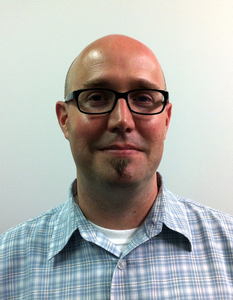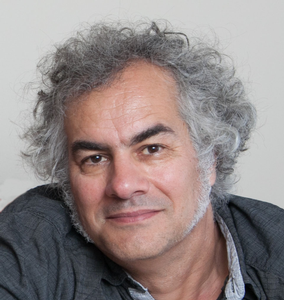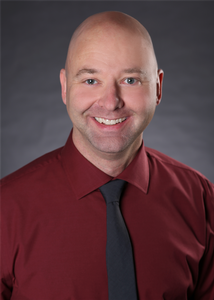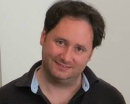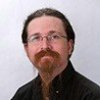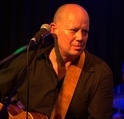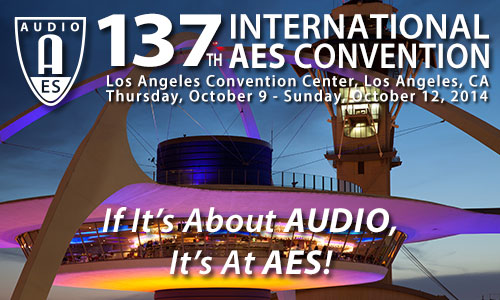
AES Los Angeles 2014
Networked Audio Track Event Details
Thursday, October 9, 9:00 am — 10:00 am (Room 404 AB)
Networked Audio: N1 - A Primer on Fundamental Concepts of Media Networking
Presenter:Landon Gentry, Audinate - Portland, OR, USA; Sydney, NSW, Australia
Abstract:
This session will cover the OSI model and how data travels through network layers (a “networking stack”): Layers 1, 2, 3 and 4; Cables, MAC Addresses, IP Addresses, and networking protocols. An overview of some networking standards and standards organizations, including the IEEE and the IETF. An introduction to IP data networking . . . it is how everything is already wired together. Identify some of the advantages and limitations of IP data networks with respect to real-time media. A brief discussion of IP networking standards and protocols that can be leveraged for media networking.
Thursday, October 9, 10:15 am — 11:45 am (Room 404 AB)
Networked Audio: N2 - History of Digital Audio Networking
Presenter:Kevin Gross, AVA Networks - Boulder, CO, USA
Abstract:
Digital audio networking was pioneered by the telephone companies in the 1960s. Digital audio came into use in professional applications starting in the late 1970s. Standard digital interconnect for professional applications emerged in the 1980s. It wasn’t until the mid-1990s that real-time network distribution as we currently know it was born. This tutorial will follow the evolution of real-time digital audio networking, examining design decisions and changes in the underlying network technology that has enabled advancement to the current state of the art. Some of the specific networking technologies to be covered include: VoIP, CobraNet, MaGIC, Ethersound, A-Net, AES47, Livewire, AES50, ACIP, Dante, AVB, Q-LAN, RAVENNA and AES67. Historical perspective on the topic should give attendees an indication of where audio networking is headed.
 | This session is presented in association with the AES Technical Committee on Network Audio Systems |
Thursday, October 9, 4:30 pm — 6:00 pm (Room 404 AB)
Networked Audio: N3 Moved to Sat. 12:15
Thursday, October 9, 4:30 pm — 6:00 pm (Room 408 A)
Broadcast and Streaming Media: B3 - Routing Audio in a Broadcast Facility
Chair:Mike DaSilva, CBS Radio - Sacramento, CA, USA
Panelists:
Steve Dove, Wheatstone Corporation
Andreas Hildebrand, ALC NetworX GmbH - Munich, Germany
Herbert Lemcke, Lawo North America - Toronto, Ontario, Canada
Al Salci, SAS Audio - Burbank, CA, USA
Greg Shay, The Telos Alliance - Cleveland, OH, USA
Abstract:
What new audio routing advancements are we likely to see in a typical broadcast plant design? Over the past decade, more broadcasters have had to upgrade their facilities while having to utilize modern audio routing techniques. This panel will discuss such advancements including protocols such as Ravenna, AES67, AVB, Dante, Livewire and other related techniques and the typical challenges broadcasters are likely to face.
Friday, October 10, 9:00 am — 10:00 am (Room 405)
TC Meeting: Network Audio Systems
Abstract:
Technical Committee Meeting on Network Audio Systems
Friday, October 10, 11:00 am — 11:45 am (Stage LSE)
Live Sound Expo: Networks and IT—The Basics
Presenter:Landon Gentry, Audinate - Portland, OR, USA; Sydney, NSW, Australia
Abstract:
Live sound is increasingly embracing networking for audio distribution and system control. You don’t have to be an IT professional to set up such networks, but you do need the core knowledge covered here.
Friday, October 10, 12:15 pm — 1:15 pm (Room 308 AB)
Networked Audio: N4 - The Benefits of Ethernet AVB
Presenter:Rick Kreifeldt, Harman International
Abstract:
As, what have been termed, third generation media networking technologies and protocols have emerged over the past few years the benefits have been poorly understood by integrators and systems designers. This session will focus on the practical benefits of Ethernet AVB. Where it's benefits can best be exploited will be explored as regards systems scale, environment, performance requirements such as latency and ease of deployment.
Friday, October 10, 2:15 pm — 3:00 pm (Room 409 AB)
Networked Audio: N5 - How Microsoft Upgraded their Redmond, WA, Production Facilities with Audio-over-IP
Chair:John L. Ball, Microsoft Corp. - Redmond, WA, USA
Abstract:
How Microsoft upgraded their production facilities and parts of the Redmond, WA campus with Audio-over-IP using a Dante network with a multi-vendor system.
Friday, October 10, 3:00 pm — 3:45 pm (Room 409 AB)
Networked Audio: N6 - Deployment of Large Scale Networking Based Announcement System for Sydney Rail
Presenter:Mark Lownds, Stagetec - Sydney Australia
Abstract:
Large deployment of Dante Networking used to upgrade the mass transit rail systems. Sydney Trains, the operator of all railway services in New South Wales. Stagetec presents a look at this system rollout to equip the platforms with new announcement technology.
Friday, October 10, 4:00 pm — 5:00 pm (Room 409 AB)
Networked Audio: N7 - How the Newly Formed Media Networking Alliance Will Support AES67 Adopters
Chair:Bill Scott, Bosch Communications Systems - Burnsville, MN, USA
Panelists:
Terry Holton, Yamaha R&D Centre - London, UK
Stefan Ledergerber, Lawo Group - Zurich, Switzerland; LES Switzerland GmbH
Marty Sacks, Telos Alliance - Cleveland, OH, USA
Rich Zweibel, QSC Audio - Boulder, CO; K2
Abstract:
IT technology has a lot to offer, far more than our industry could ever afford to develop on its own. A wide installed base and huge functionality at an unbeaten price point are just two examples. We need to adopt what is already there, carefully rethink our traditional requirements, and adapt the commodity technology to our needs. AES67 is the essential recipe how to do that, making sure all manufacturers have a common denominator while still being able to maintain healthy competitive advantages. AES67 (after AES/MADI) is to the audio industry what VoIP (after ISDN) is to the telephone industry.
This panel will summarize AES67, discuss why we need it within the industry, and the purpose of the Media Networking Alliance whose mission will be to encourage adoption and interoperability of the standard.
Saturday, October 11, 9:00 am — 10:30 am (Room 404 AB)
Networked Audio: N8 - Implementation of a Large Scale Ethernet AVB Audio Network at ESPN
Chair:Tim Shuttleworth, Renkus Heinz - Oceanside, CA, USA
Panelists:
Brian Ames, DDC - Arlington Heights
Warren Belkin, Arista Networks - Menlo Park, CA, USA
Christian Diehl, Riedel - Wuppertal, Germany
Jonathan Pannaman
Abstract:
ESPN has installed a large scale Ethernet AVB audio distribution network at its Bristol, CT Digital Center 2 (DC2). Panelists involved in the installation will discuss the business case for this major project along with the audio requirements and the IT infrastructure required to accomplish this project. The presentation will address the challenges in implementing an AVB based infrastructure on such a vast scale and the in-service experience since the facility opened in June, 2014.
Questions that this presentation will answer:
• What were the audio requirements that ESPN and how did AVB provide a solution?
• What were your other technology considerations and why did you chose AVB?
• What role did open standards play in your decision to choose AVB?
• What were some of the challenges for the installation and how did you arrive at a solution?
• What was the biggest benefit to utilizing AVB for this installation? What are the implications of the install for today’s workflow?
Saturday, October 11, 10:30 am — 12:00 pm (Room 404 AB)
Networked Audio: N9 - Using Audio Content Over IP Technology in Public Radio
Chair:Sherri Hendrickson, Director Broadcast Media and Operations, American Public Media (APM) - Los Angeles, CA, USA
Panelists:
Ian Adams, Systems Administrator American Public Media (APM) - Los Angeles, CA, USA
Tom Nelson, Director Broadcast Engineering, American Public Media Group (APMG) - St. Paul, MN, USA
Abstract:
A recently completed refresh of American Public Media’s Marketplace studios is focused on real-time collaboration via IP based signal distribution for audio, display, and control. Legacy analog and digital cabling has been replaced by a multicast IP focused IT infrastructure connecting the main Los Angeles studios to APM’s New York and Washington DC bureaus. Marketplace Morning Report and Marketplace Money are both hosted from New York but produced, directed, and engineered from the control rooms in Los Angeles. This workshop will explore how audio over IP enables real time collaboration across locations for live broadcast.
Our three presenters will discuss
· The business case for this major investment and its impact on work flow and the user experience from the host, director and producers’ perspective.
· The audio technologies employed and systems design from an audio signal routing and control perspective
· The underlying IT infrastructure which supports all this and how off-the-shelf network equipment is configured to support multicast distribution and provide transmission redundancy
Saturday, October 11, 11:00 am — 1:00 pm (Room 406 AB)
Live Sound Seminar: LS8 - The Cube Spatial Audio Renderer: The Nexus of Collaborative Performance and Live Sound for Multidisciplinary Research
Panelists:Mike Roan, Virginia Tech - Blacksburg, VA, USA
Tanner Upthegrove, Virginia Tech - Institute for Creativity, Arts and Technology - Blacksburg, VA, USA
Abstract:
The Institute for Creativity, Arts, and Technology (ICAT) introduces a world-class collaborative research and performance sound instrument, The Cube Spatial Audio Renderer (CSAR). Housed in Virginia Tech’s new Moss Arts Center, CSAR layers immersive sound technologies to create a unique, multi-user experience. CSAR is specifically designed for the Cube, a five-story, hybrid theater and research lab outfitted with hundreds of patchable AV and data panels. The primary 124.4 system produces Ambisonics, Wave Field Synthesis, and other spatial audio techniques. Nine ultrasonic beam speakers complement the primary system, four of which are on motorized pan-tilt arms. Eight relocatable, high-fidelity loudspeakers complete the system.
This unique facility will provide researchers with astonishing new capabilities in the fields of science, engineering, art, and design including Sound Field Synthesis, Auralization of Big Data, Human Perception, and Psychoacoustics.
The primary aesthetic goal for the Cube is to pursue advances in multichannel music and sound art for 3D audio. The methodologies will include the composition of new works for the Cube; the development of new software to facilitate work in the Cube; dissemination of research results through technical publications, software distribution, and concerts open to the public; and finally collaborations with other institutions that are working in 3D audio.
Saturday, October 11, 12:15 pm — 1:45 pm (Room 308 AB)
Networked Audio: N3 - Using AES67 Networking—Practical Issues in AES67 Deployment
Chair:Andreas Hildebrand, ALC NetworX GmbH - Munich, Germany
Panelists:
Landon Gentry, Audinate - Portland, OR, USA; Sydney, NSW, Australia
Kevin Gross, AVA Networks - Boulder, CO, USA
Gints Linis, University of Latvia - IMCS - Riga, Latvia
Greg Shay, The Telos Alliance - Cleveland, OH, USA
Abstract:
The AES67 standard provides comprehensive interoperability recommendations for professional audio over IP networks in the areas of synchronization, media clock identification, network transport, encoding and streaming, session description, and connection management.
This workshop will discuss the practical issues that will arise when AES67 is deployed in small- and large-scale installations, including physical media, switches and routers, and timing and latency.
N10 is canceled.
 | This session is presented in association with the AES Technical Committee on Network Audio Systems |
Saturday, October 11, 2:00 pm — 3:00 pm (Room 404 AB)
Networked Audio: N11 - How Standardization has Benefited Our Industry and How a Command and Control Standard Can Generate Growth and Innovation
Presenter:Ethan Wetzell, Bosch Communications Systems - Burnsville, MN USA; OCA Alliance
Abstract:
This session will look at the impact that standards have had on the industry in shaping technological and application innovations. We will take a look back on how industries have evolved due to the benefits and proliferation of standards that have enabled interoperability and look forward to how emerging standards will create new innovations and opportunities.
 | This session is presented in association with the AES Technical Committee on Network Audio Systems |
Saturday, October 11, 4:00 pm — 6:00 pm (Room 407)
Standard: AESSC: Audio Applications of Networks
Abstract:
Standards Committee Meeting on Audio Applications of Networks
Saturday, October 11, 4:00 pm — 5:00 pm (Room 406 AB)
Networked Audio: N12 - AVB for Audio Distribution in Cars, Some Real World Implementation
Presenter:Robert Boatright, Harman International - Salt Lake City, UT, USA
Abstract:
One arena where Ethernet AVB has already seen strong adoption is in infotainment systems for cars. This session will discuss some of the implementations already designed or in advanced development. Systems requirements and how these drive the network architecture and the end point specifications will be explored. Potential adopters in other application spaces such as commercial and residential systems will be interested to learn where the development of AVB based products for cars is driving the integrated circuit development road maps.
Sunday, October 12, 9:00 am — 10:00 am (Room 409 AB)
Networked Audio: N13 - Implementing the Command and Control Capabilities in AVDECC (IEEE1722.1)
Presenter:Jeff Koftinoff, Meyer Sound Laboratories - Vernon, BC, Canada
Abstract:
An overview of the major capabilities of the AVB Control Protocol IEEE 1722.1-2013, known as the AVDECC (Audio/Video Discovery, Enumeration, Connection management, and Control) Protocol and details of the pieces you need to implement the protocol for an Talker, Listener, or Responder embedded AVB device.
Sunday, October 12, 10:45 am — 11:45 am (Room 404 AB)
Networked Audio: N14 - Large Scale Implementations of AVB Networks
Presenter:Jeff Koftinoff, Meyer Sound Laboratories - Vernon, BC, Canada
Abstract:
Audio Video Bridging makes it easy to build medium scale audio networks. Learn aspects of how to plan, deploy, and manage AVB audio and video networks. Learning objectives include:
• Understand the important points to consider when choosing AVB devices.
• Estimate AVB network infrastructure scale and requirements.
• Learn methods to manage deployed AVB networks.
Sunday, October 12, 12:15 pm — 1:15 pm (Room 404 AB)
Networked Audio: N15 - Interoperability Compliance Testing for Audio Network Appliances
Presenter:Kevin Gross, AVA Networks - Boulder, CO, USA
Abstract:
End users, systems integrators, and design consultants need assurance that a networked device will interoperate with other networked devices thath implement the same protocol. How is this interoperability best guaranteed? Interoperability compliance testing is an essential requisite to meaningful claims by manufacturers that their product provides assured interoperability. How is this testing best achieved? This session will explore the various methods for compliance testing with particular reference to verifying compliance with the AES67 interoperability standard.
 | This session is presented in association with the AES Technical Committee on Network Audio Systems |
Sunday, October 12, 1:30 pm — 5:00 pm (Room 309)
Paper Session: P20 - Applications in Audio: Part 2
Chair:
Alexander Voishvillo, JBL/Harman Professional - Northridge, CA, USA
P20-1 Producing Interactive Immersive Sound for MPEG-H: A Field Test for Sports Broadcasting—Hanne Stenzel, Fraunhofer Institute for Integrated Circuits IIS - Erlangen, Germany; Universityt for Music and Perfoming Arts - Vienna, Austria; Ulli Scuda, Fraunhofer Institute for Integrated Circuits IIS - Erlangen, Germany
The present paper gives a practical example how broadcast content can be produced for MPEG-H. Existing production workflows are investigated with the question in mind, what needs to be adapted in order to make use of audio objects and immersive 3D-Audio provided by the new broadcast standard. After a short introduction to the features of MPEG-H, practical use cases are presented, such as immersive mixes and interactive personalized audio. In a field test, two sports events were accompanied and original audio material was gathered. Recording methods were tested to see how much additional effort is needed to make use of the mentioned features. The results show that already existing TV productions techniques can be used to provide enough audio material for interactive TV mixes. With little additional effort immersive 3D-audio environments can be created.
Convention Paper 9211 (Purchase now)
P20-2 Headstock Resonances in the Electric Bass Guitar—Bryan Martin, McGill University - Montreal, QC, Canada; Centre for Interdisciplinary Research in Music Media and Technology (CIRMMT) - Montreal, QC, Canada; Goran Petrovic, McGill University - Montreal, Quebec, Canada
The solid-body electric bass has long been established as a staple in jazz and popular music. This investigation examines the resonant characteristics of the headstock. Sine sweep techniques are employed to extract resonant characteristics from the headstock and compares these with those of the plucked open strings. It was found that there appears to be a correlation between the integrity of the open string resonances in the headstock with the output sound quality of the instrument.
Convention Paper 9212 (Purchase now)
P20-3 Requirements Specification for Amplifiers and Power Supplies in Active Loudspeakers—Henrik Schneider, Technical University of Denmark - Kgs. Lyngby, Denmark; Lasse C. Jensen, Technical University of Denmark - Kgs. Lyngby, Denmark; Lars Press Petersen, Technical University of Denmark - Kgs. Lyngby, Denmark; Arnold Knott, Technical University of Denmark - Kgs. Lyngby, Denmark; Michael A. E. Andersen, Technical University of Denmark - Kgs. Lyngby, Denmark
This work aims to provide designers with a method to develop a requirements specification for power supplies and amplifiers in active loudspeakers. The motivation is to avoid over-sizing and unnecessary cost. A realistic estimation of the power supplied during playback of audio in a given loudspeaker is obtained by considering a wide range of audio source material, loudness normalization of the source material, crossover filtering, driver characteristics as well as a perceived maximum loudness/volume level. The results from analyzing a sub-woofer and a woofer reveals the peak power, peak voltage, peak current, and apparent power—thus providing a solid foundation for a requirement specification.
Convention Paper 9213 (Purchase now)
P20-4 Multiphysical Simulation Methods for Loudspeakers—Advanced CAE-Based Simulations of Motor Systems—Alfred Svobodnik, Konzept-X GmbH - Karlsruhe, Germany; Roger Shively, JJR Acoustics, LLC - Seattle, WA, USA; Marc-Olivier Chauveau, Moca Audio - Tours, France
This is the first in a series of papers on the details of loudspeaker design using multiphysical computer aided engineering simulation methods. In this paper, the simulation methodology for accurately modeling the electromagnetics of loudspeakers will be presented. Primarily, the creation of a useful impedance curve in the virtual world will be demonstrated. The influences of the mechanical mounting will also be illustrated, as well as the inherent non-linearities of the loudspeaker motor. Those non-linearities will be illustrated through the correct simulation of the electromagnetic driving force, which has an influence on all loudspeakers, and the voice coil inductance, which can have a profound influence on midrange and high frequency loudspeakers. Results will be presented, correlating the simulated model results to the measured physical parameters and to the impedance curve. From that, the important aspects of the modeling that determine its accuracy will be discussed.
Convention Paper 9214 (Purchase now)
P20-5 MotionMix: A Gestural Audio Mixing Controller—Jarrod Ratcliffe, New York University - New York, NY, USA
This paper presents a control interface for stereo mixing using real time computer vision. The user’s sense of depth and panorama are improved over the traditional channel strip, while broad accessibility is maintained by integrating the system with Digital Audio Workstation (DAW) software and implementing a system that is portable and affordable. To provide the user with a heightened sense of sound spatialization over the traditional channel strip, the concept of depth is addressed directly using the stage metaphor. Sound sources are represented as colored spheres in a graphical user interface to provide the user with visual feedback. Moving sources back and forward controls volume, while left to right controls panning. Preliminary evaluation is conducted through a pilot study, and user feedback is considered regarding future applications of the interface.
Convention Paper 9215 (Purchase now)
P20-6 An Associative Shared Memory Approach to Audio Connection Management—Andrew Eales, Wellington Institute of Technology - Wellington, New Zealand; Rhodes University - Grahamstown, South Africa; Richard Foss, Rhodes University - Grahamstown, Eastern Cape, South Africa
A distributed, associative memory that advertises audio streams and represents audio connections between networked audio devices is described. Characteristic features of a shared, associative memory are discussed, and three parameter-based models that represent audio signals and audio connections are introduced. Connection management is then discussed with reference to a distributed, associative memory environment. This environment allows changes made to audio connections to be automatically propagated to all networked devices, while also eliminating potential race conditions between connection requests. Additionally, connection management applications can be shared between different networked devices and controllers.
Convention Paper 9216 (Purchase now)
P20-7 Utilizing Gesture Recognition and Ethernet AVB for Distributed Surround Sound Control—Mitchell Hedges, Rhodes University - Grahamstown, South Africa; Richard Foss, Rhodes University - Grahamstown, Eastern Cape, South Africa
Gesture recognition has become a preferred approach to the control of various systems. This allows users of the system to interact without having to use any controls or equipment. This paper investigates the use of gesture recognition in order to select and transport audio tracks over an Ethernet AVB network to speaker endpoints. The research uses equipment that is commercially available and relatively cost efficient. The endpoints receive audio samples that are encapsulated within network packets and processes them. The audio tracks are mixed at the endpoints according to gain ratios that will change and be different for each endpoint.
Convention Paper 9217 (Purchase now)
Sunday, October 12, 2:00 pm — 2:45 pm (Stage PSE)
Project Studio Expo: PSE17 - Real-World AVB Networking in the Studio and on Stage Using MOTU AVB Audio Interfaces
Abstract:
Product, technology presentation with audio interfaces and networking
